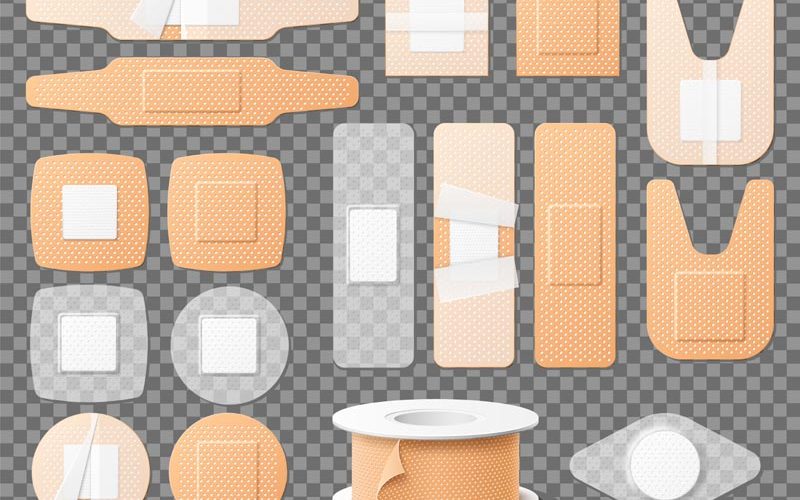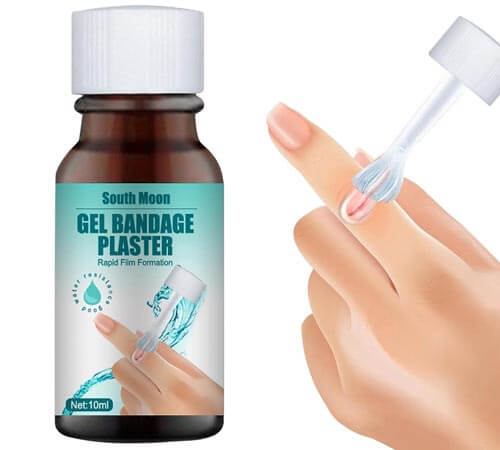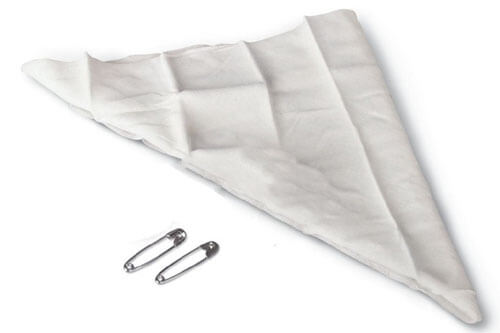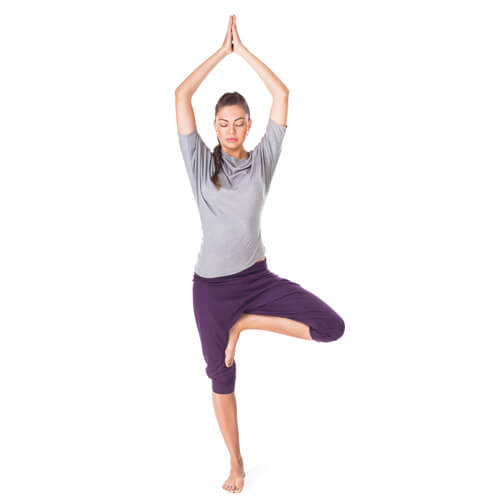Did you know bandages are very important for healing? Bandages are basic supplies often found in first aid kits. This article looks at different kinds of bandages used for first aid and medical treatment. We have talked about different types of bandages, such as ones to reduce injuries and swelling and adhesive bandages that provide protection and comfort.
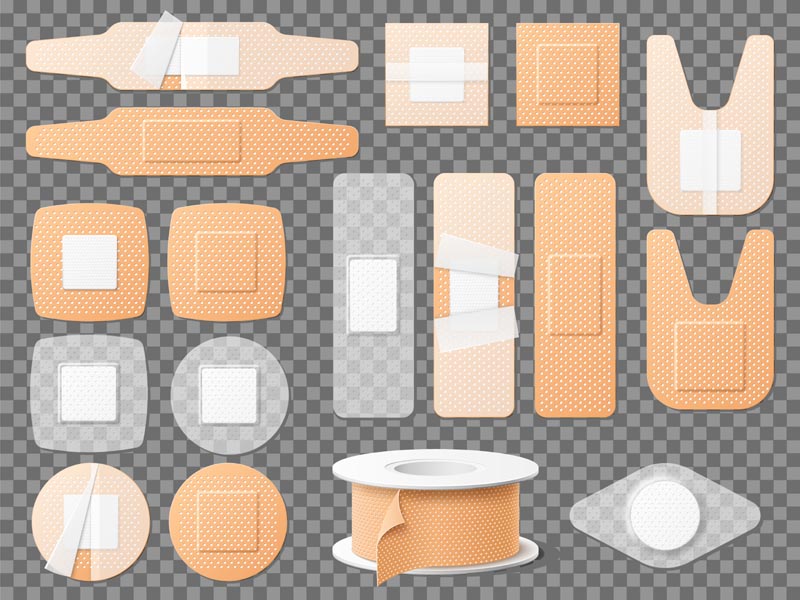
Image Source: Freepik
In this guide, we will learn about all the different kinds of bandages, their materials, and how they are used. It is intended for anyone who is interested in wound care, whether they are a caregiver or not. Let’s get started!
All About bandages
Bandages are medical coverings that protect injured or wounded areas. They are usually made of cotton, gauze, or elastic fabric, and are applied to the skin or over a dressing to keep it in place. Bandages help to prevent infection, reduce bleeding, and help the healing process.
People have been using bandages for a long, long time. In ancient civilizations, people used animal skins and strips to cover wounds. As time has gone on, bandages have become more and more advanced due to technological and medical advances.
Bandages help heal by covering the wound and protecting it from dirt and germs. Applying pressure to the bandage can also slow down the bleeding. You can get different types of bandages to best suit the injury, making sure the person is comfortable and gets the support they need.
Different Types of Bandages with Images:
This guide will show you how to take care of different injuries safely and effectively. So, let’s start learning about bandages and how to make people feel better.
General Gauze Bandage
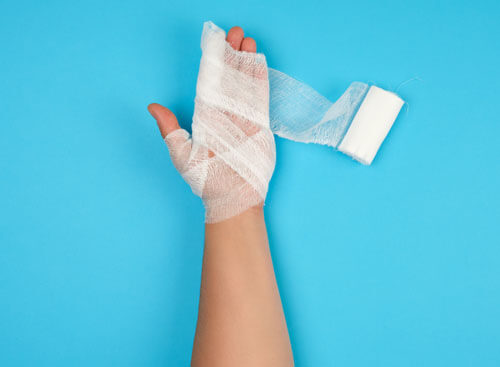
Image Source: Freepik
Gauze bandages are made of lightweight fabric and come in different sizes. They are useful for first aid kits, providing support to injured areas, securing dressings, and dressing wounds. They can also be used to reduce swelling, help with clotting, and protect injuries from dirt and bacteria. Bandages can also be used to keep parts of your body still, like making splints.
Sticky Tape Adhesive Bandage
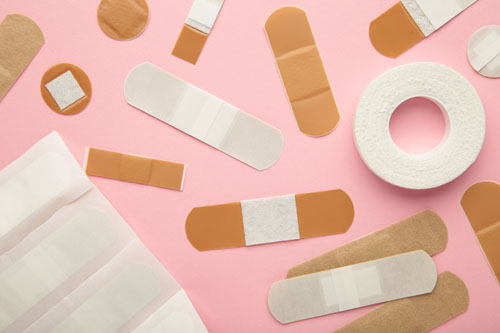
Image Source: Freepik
Adhesive bandages, commonly known as band-aids, are small medical dressings used to cover minor cuts, scrapes, and wounds. They have an adhesive on one side that sticks to the skin and a sterile pad in the middle to cover the wound. This helps protect the injury from dirt, bacteria, and further damage. They come in different sizes and shapes and are a simple and convenient way to treat minor injuries. Adhesive bandages are a must-have for first aid kits for both adults and kids.
Gel Bandage
A liquid bandage is a modern way to help protect and heal minor cuts, abrasions, and wounds. It forms a thin, waterproof layer over the injury as it dries, and it comes in a liquid form. This layer helps the wound to heal while also stopping bacteria, water, and dirt from getting in. Liquid bandages are great for injuries that move a lot or that are hard to reach.
Pressure Bandage
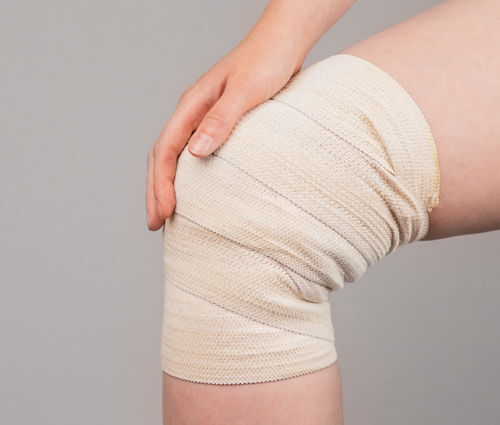
l
A compression bandage is a type of medical wrap used to help support and control the pressure on a part of the body that is healing or injured. It helps blood flow, reduces pain, and can help with swelling. Compression bandages come in many different designs and materials, some of which are elastic and some which are not. They can be used to treat conditions like venous insufficiency, sprains, and strains.
- Short stretch compression:
Short stretch compression has minimal stretch and gives a lot of compression which can help with conditions like poor circulation in the veins or blockages in the lymphatic system.
- Long stretch compression:
Long stretch compression supports injuries like strains and sprains by applying moderate pressure that stretches over a long period of time.
Cravat Bandage Or Triangular Bandage
Triangular bandages, also known as cravat bandages, are useful pieces of cotton cloth shaped like a right triangle. They can be used in various medical situations, such as making slings to support injured arms or shoulders, immobilizing broken limbs, or keeping dressings in place. Triangular bandages are important for both emergency and regular medical care.
Stretchable Tube Bandage
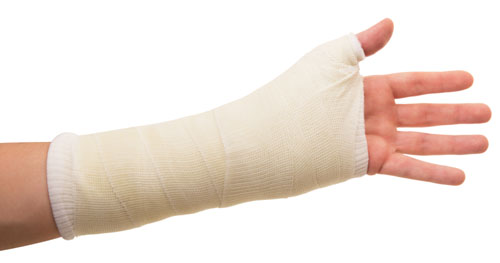
Image Source: Freepik
A tube bandage is a type of fabric that is stretchable and shaped like a cylinder. It’s used for medical purposes and helps to support and protect injured areas. It has elastic material that helps it to fit different body parts, and it provides gentle compression. These bandages come in different sizes to better-fit body parts.
Flexible Kirigami Bandage
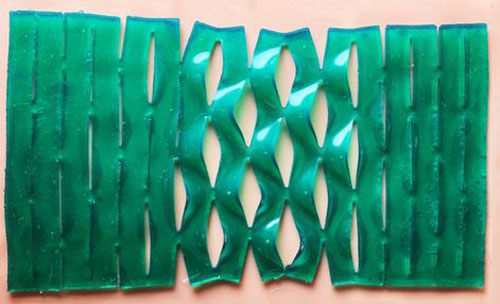
Image Source: Pinterest
The Kirigami bandage is a special type of medical dressing that is designed to be shaped and folded like origami. This makes it easier to fit it on an irregular body part or wound, gives the patient more comfort, and helps to heal the wound.
Woven Fabric Elastic Knit
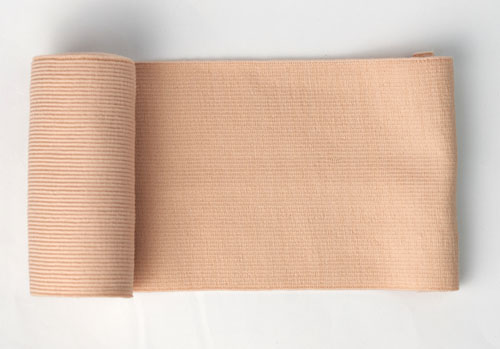
Image Source: Freepik
A knit elastic bandage is a type of stretchy bandage that helps with healing or injured body parts. It is made of woven fabric and it keeps a steady pressure on the area it covers. These bandages are often used to treat sprains, strains, and other injuries, so you can usually find them in medical settings.
- Elastic adhesive bandage:
A medical wrap with a sticky back called an elastic adhesive bandage, is flexible and stretchable. It helps to support and squeeze the hurt area of the body at the same time.
- Elastic rubber bandage:
A rubber bandage is a type of medical wrap made of rubber and elastic materials that provides a controlled amount of compression to injured parts of the body and helps to keep the pressure even while fitting the shape of the body.
- Elastic synthetic Bandage:
Elastic synthetic bandages are medical wraps made from a combination of man-made fibers, such as polyester or nylon. These bandages are often used for after-surgery care or in sports medicine.
Square Quadrangular Bandage
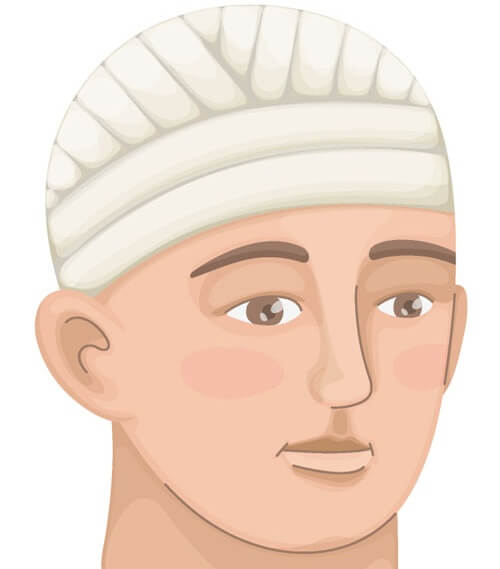
Image Source: Freepik
A quadrangular bandage is a large square piece of cloth that can be used in a variety of ways. It can be folded into a triangular shape to create a sling, wrapped around a hurt limb to keep it still or dressed a head injury. It is a very useful tool to have in an emergency medical kit because it can be adapted to many different uses.
T-Talied Or Four-Tailed Bandage
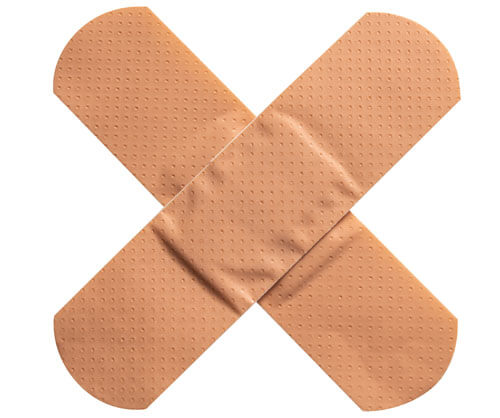
Image Source: Freepik
A four-tailed bandage, also known as a ‘T-bandage’ or ‘four-tailed cravat’, is a type of medical wrap with four separate ends. It is very versatile and can be used in many different ways, such as to support joints or immobilize body parts. This bandage is easily adjustable to fit many different injuries.
Scultetus Bandage
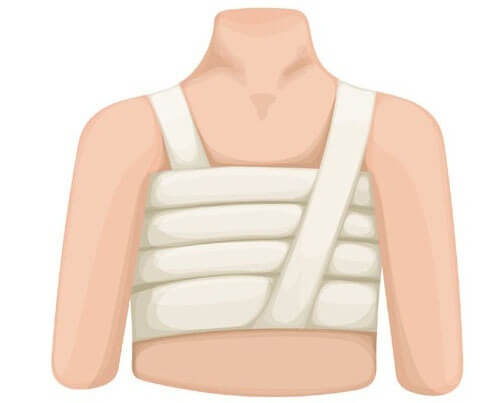
Image Source: Freepik
A many-tailed bandage, also known as a Scultetus bandage, is a type of bandage with multiple pieces of cloth connected to the middle piece. It is used for supporting and compressing larger body parts like the chest or stomach. It is adjustable to fit the shape of the body and provide a secure and comfortable fit. It is commonly used in wound care or after surgery to keep dressings in place, provide pressure, and aid in healing.
Self-Stick Bandages
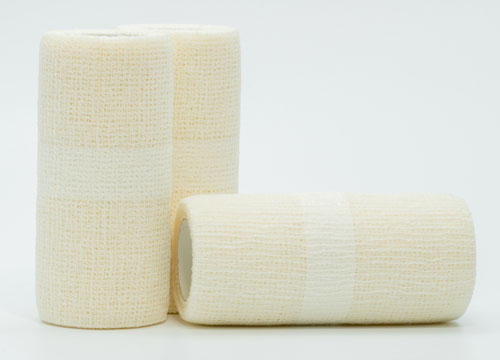
Image Source: Freepik
Cohesive bandages are special types of bandages that stick to themselves and the skin or hair. They are sometimes called self-adhesive or Cohesive. They are often used to wrap injuries such as strains or sprains, especially in veterinary care or sports medicine. These bandages can be easily adjusted without causing any discomfort when removed, and do not need clips or pins.
Healing Impregnated Bandages
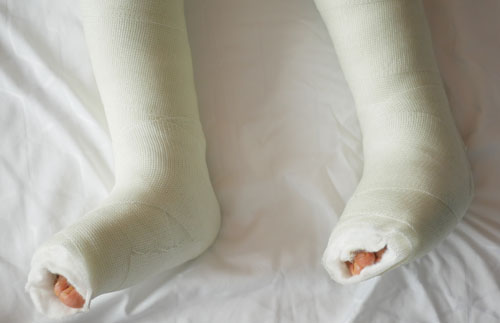
l
Bandages that are infused with substances like medicines, antiseptics, or healing agents are known as impregnated bandages. These bandages provide both coverage and therapeutic benefits to the injured area. The substances help with pain relief, support healing, and reduce the risk of infection. This helps the healing process and reduces the chances of complications.
- Plaster of Paris Impregnated bandages:
As the name suggests, these Impregnated bandages consist of a gauze bandage infused with plaster powder. These bandages are used in orthopedics to provide support and immobilize fractures giving support during the healing process.
- Water glass (silica) impregnated bandages:
Specialized medical dressings made of a combination of water glass and gauze are called solium silicate or water glass-impregnated bandages. Once these bandages are applied to the skin and dried, they form a lightweight and supportive cast, which is commonly used in orthopedic procedures.
- Starch-impregnated bandages:
A starch-impregnated bandage is a type of medical dressing that has starch from plants in it. People with skin problems can use these bandages to help treat and manage their wounds. The starch makes the bandages soft and flexible, and it helps to absorb extra moisture from the wound.
Veterinary Bandages
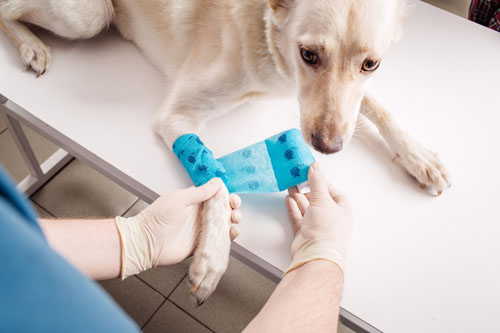
l
Animal bandages are special types of medical dressings used to treat wounds and injuries on animals. They are made to fit the individual needs of different animals, taking into account their anatomy.
- Veterinary casts:
Veterinarians use casts to keep broken bones in place and help the healing process for animals, just like for people.
- Pet booties:
Pet booties act as a shield to stop any more harm and help paws or claws to heal.
- Surgical dressings:
Veterinarian surgeons use special bandages (called surgical dressings) to cover and protect wounds, stitches, and cuts made during surgery.
Bandage Applying Methods
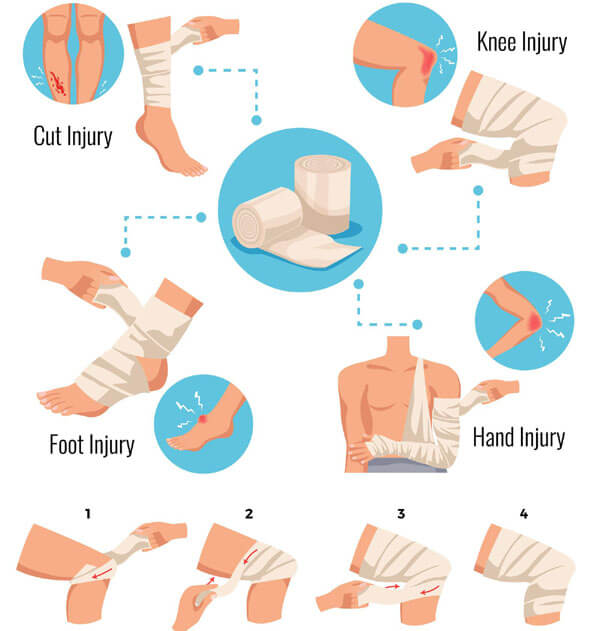
Image Source: Freepik
Each type of Bandage is tailored to specific needs and areas of the body, and several methods exist for their application. Here are some common bandage-applying techniques to look into.
1. Circular turn:
The circular turn is a way to wrap a Bandage around an injury. It involves overlapping circles. This method is often used to keep wound dressings in place.
2. Spiral turns:
The spiral technique is like the circular method, but it wraps the Bandage around the injury in a spiral shape. This is a great option when you need to cover larger body parts such as arms and legs.
3. Reverse Spiral turn:
This method is the same as the spiral technique, except the wrapping is done in the opposite direction. This helps make the Bandage more secure.
4. Figure-8:
The figure-8 technique is a way of wrapping a bandage around a joint in a figure-8 pattern. It allows the joint to move some, while still providing support.
5. Recurrent:
This technique involves overlapping the badge multiple times in a wavy pattern. It is often used to ensure a tight fit for head and scalp coverings.
6. Spica:
The Spica technique is a way of wrapping a bandage around a joint in the shape of a ‘V’ to give it extra stability and support.
7. Velpeau:
The Velpeau technique uses a bandage to keep the shoulder and arm still by making a kind of sling.
8. Desault:
The desault method is like the Velpeau method, but instead of keeping the shoulder still, it holds the arm across the chest.
9. Ankle wrap:
A sprained ankle can be supported and compressed using the ankle wrap technique, which involves wrapping a Bandage around the foot and ankle in a certain way.
10. Finger bandaging:
This method involves wrapping the bandage around the bottom of the finger and winding it up the finger, which allows each finger to be wrapped individually.
Interesting Facts About Bandages:
Here are some interesting facts about Bandages:
- People in old societies such as the Greeks and Egyptians would use materials from plants and linen to cover up injuries.
- Bandages today are made with special technology that helps stop infections and makes wounds heal faster.
- Different types of bandages are made for different uses.
- Bandages are very helpful for treating small cuts, scratches, and injuries in a hurry, so they are a very important part of first aid for children all over the world.
- Bandages not only help heal wounds, but they also protect against germs, dirt, and other things in the environment that may cause infections.
- Putting on a Bandage not only means physical healing, but it also shows that you care and are supporting someone who needs it.
- People are working to create bandage materials that are eco-friendly and can decompose, which will help reduce our impact on the environment.
This article covers all the different types of bandages that people have created to help heal injuries and wounds. We have listed lots of different bandages that can help protect against infection, support healing, and have different uses. Bandages are really important and helpful, so let us know if this article is useful for you!
Read More:
- Latest Ceiling Design Ideas for Shops and other Commercial Places
- Unique Engagement Decoration Ideas at Home 2023
- 41 Types of Bricks Used in Construction
- Homemade Diya Decoration Ideas in 2023
- Unique Engagement Decoration Ideas at Home 2023
